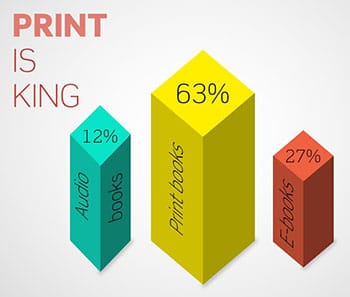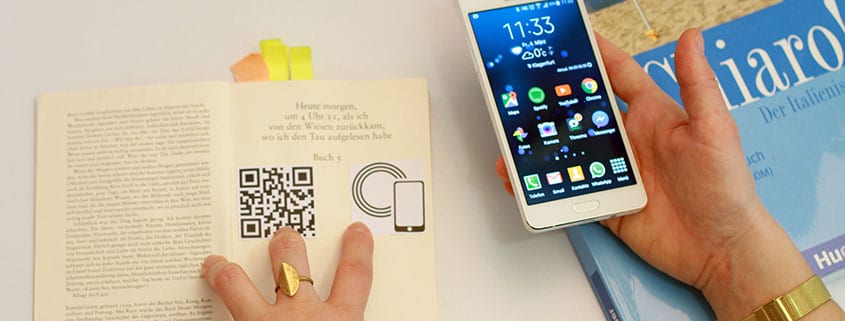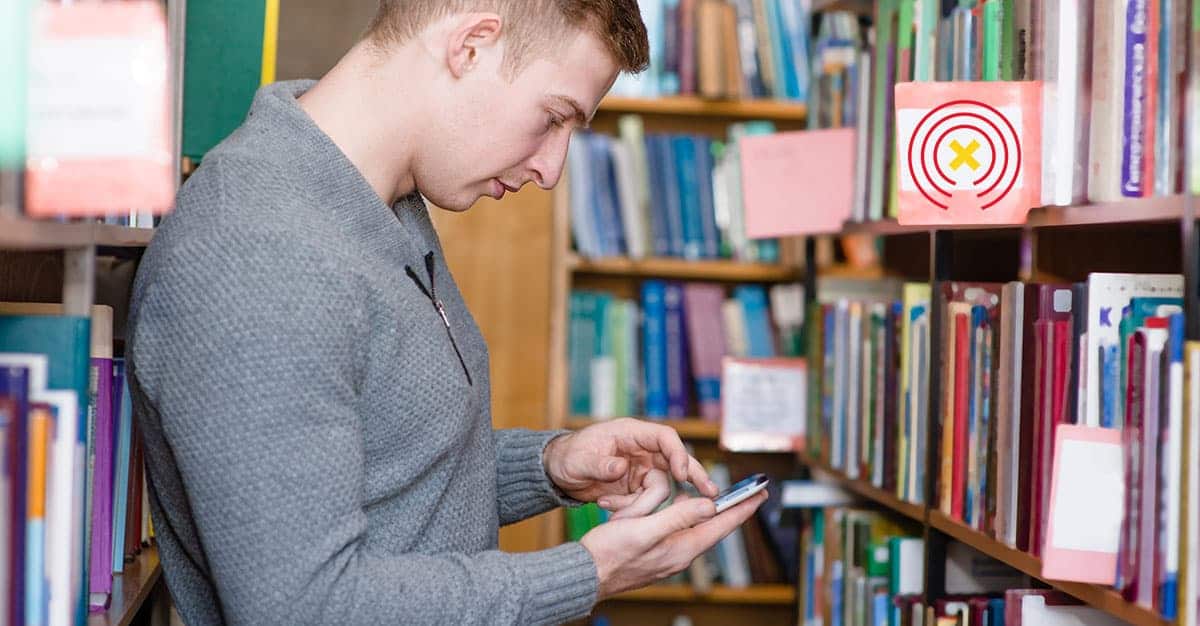
But the physical copy of a book has one serious problem. Long editing- and publishing phases make it hard to keep it up-to-date. Once printed, nothing can be added or updated. The internet, on the other hand, shines in that aspect and becomes a significant competition with its up-to-date content.
But that doesn’t mean, that publishers and authors must lose this fight. Real books can be enhanced with digital content, generating additional value with multimedia topics.
The first feedback we got, allows us to be optimistic, that the following ideas will meet with the approval of the branch. Erika Hornbogner, recently promoted chief publisher from Drava, refers to herself as a “safe bet” and also Wieser Verlag is “more than interested.” Author Isabella Straub also looks favorably upon the digital book enhancement but also makes clear, that “it has to be exclusive content, which then leads to an emotional bond between author and reader.”
Besides everything mentioned, the smartphone is closer than the computer while lying on a cozy sofa. To see how such an implementation could look like, we illustrate some ideas, how books can be connected with smartphones to generate more interaction and currentness as well as success at the point of sale itself – the bookshop.
Readers Exchange
While reading a book we assimilate texts, create pictures in our heads, share the thrill with the characters and create our own opinion. You don’t like the ending of the novel? Some relevant aspects were not covered by the scientific theory?
In normal books, it is hard to take a stand and communicate your opinion. Nevertheless, this technical obstacle can be overcome with our CMS by implementing NFC-Chips and QR-Codes as a form of gateway to the online world. The new API-function enables the integration of third-party applications which opens up a variety of new opportunities. Readers of the same book can add their comments and notes to the book by scanning the codes and discussing on the mobile web.
Digital Enrichment
Even though the count of digital readers is increasing on a daily basis, print should not be underestimated in terms of entertainment and information. Among those products, your weekly Sunday paper belongs to that as well as novels, factual books and other forms of printed copies. These printed versions can be enriched by adding NFC-Chips and/ or QR-Codes. By simply placing your smartphone above the code, a new page opens in the mobile browser. Readers get access to additional content like interviews with the author, contests, the newest book releases or cooking recipes in a convenient way on their smartphone.
With this innovation, books become a multimedia experience. In the video beyond you can see how this could look like:
Up-to-date even after release
Undoubtedly books can’t keep up with the currentness, the internet is offering. At the same time, the digital variation can’t compete with the reading experience of physical copies. For that reason, NFC-Chips and/or QR-Codes are ideal to complement both. Factual books, for example, can be improved by adding newsworthy content which prevents it from becoming a dust catcher in your shelf.
Interactive Textbooks
Textbooks are a convenient way to acquire knowledge in small servings. New languages can be learned, kids can be helped getting started with mathematics and in elemental university literature, links can be made to related journals. By doing that, analog content can be upgraded with exercises and offer customers an additional service. There are basically no limits.
Promote Books
Until a book finally makes its way into the shop, quite some time can pass. Extracts can’t be distributed by brochures, but when smartphones come into play, we are getting closer to where we want to be. Extracts from e-books can be handed out to critics and the produced tempo can create one or another mention in the media.
Moreover, NFC-Chips and QR-Codes can refer to your own online-shop so your readers will never again miss a new release from their favorite author.
Via App into the Bookstore
Marketing offers an even broader variety for publishers – such as an own app. Besides QR-Codes and NFC Chips, small Bluetooth emitters, so-called Beacons, can be placed inside bookstores to inform buyers about the newest releases.
If this symbiosis between publishers and bookstores is successful, the app can lead buyers straight to the shelf where their desired book is located. An effort that would not only be profitable for best-sellers.
We are looking forward to future cooperations with publishers and especially to the collaboration with ORF Kärnten. At the Bachmannpreis, our Projekt Ingeborg will probably bring the text of authors into the public space again.
Do you want to enhance your books as well? Our Location-CMS has different price models. Get your access today on xamoom.com/demo.

